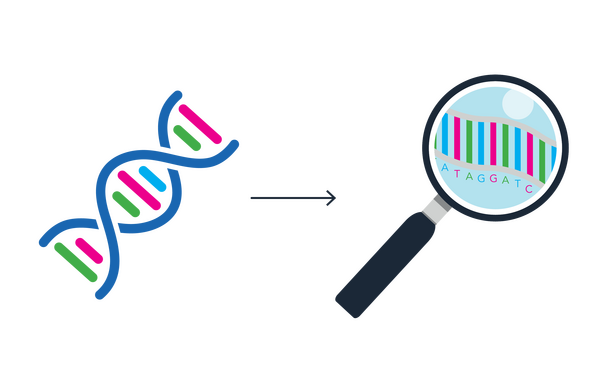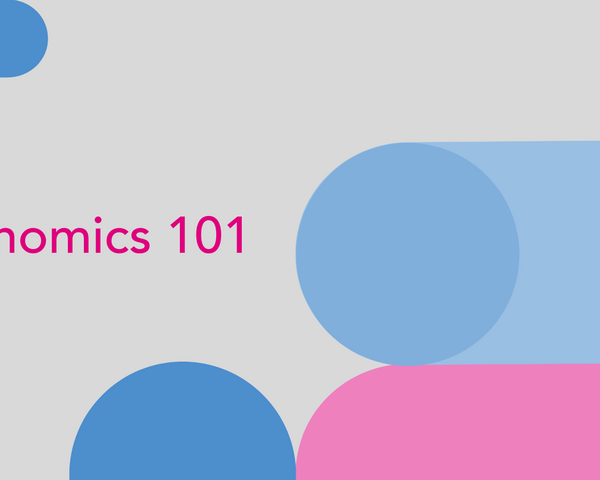Genomics 101: Are genetic conditions always inherited from parents?
By Florence Cornish onIn this series, ‘Genomics 101’, we go back to basics and explore some of the most important topics in genomics. In this blog, we answer the question: Are genetic conditions always inherited from parents?

First things first, what is the genome?
The genome is the complete set of genetic material present in each person. It is the end-to-end sequence of DNA that acts as an instruction manual, allowing us to survive, function and grow.
This sequence is made up of 4 different ‘bases’, which we represent using the letters A, T, C and G.
The cells in our body can read this sequence of letters, almost like reading a book, and produce the different types of proteins we need to survive.
How can a genetic change cause a condition?
When there is a genetic change in our sequence of DNA, for example one letter being switched for another, this can cause the instruction to be altered
Most of the time this change is harmless, but sometimes it can affect our health.
Think of our genome as a recipe book. Now imagine there is a typo in the recipe, like a missing ingredient or mixed-up steps. This could result in a health problem, just like how a changed recipe can affect the final dish.
How can we inherit conditions from our parents?
The human genome is made up of 20,000 pairs of genes. One gene from each pair comes from our mother, and the other one comes from our father.
This means that if a parent has a genetic change that causes a condition, it may get passed on to their child.
Do parents who have a condition always pass it on to their children?
In short, no, not everyone who has a genetic condition will pass it on to their children. This depends on lots of different factors.
Some genetic conditions are what we call ‘dominant’. This means that only one copy of the genetic change is required to cause the condition.
If a parent has one of these dominant genetic changes, there is a 50:50 chance they will pass it on to their child. If they do pass it on, this will most likely result in the child developing the condition as well.
Other times, however, there must be 2 copies of the genetic change to cause the condition. We call these changes ‘recessive’.
This means the child would need to receive 2 copies of the genetic change, one from their mother and one from their father, in order to develop the condition.
Does everyone with the genetic change develop the condition?
In some cases, the child may inherit a genetic change that would usually cause a condition, and yet still not show any symptoms.
This is known as 'reduced penetrance', and it can occur due to lots of different genetic and environmental factors.
Sometimes a child will show no symptoms initially, but then develop the condition in later life.
Overall, there are lots of different and complicated factors that can influence whether someone does or doesn't develop a condition. It forms an important area of research, and lots of scientists are still trying to learn more about.
So then, how do we develop genetic conditions that don't come from our parents?
We can develop genetic conditions not inherited from parents due to something known as a ‘de novo’ genetic change.
In the process of making egg cells or sperm cells, DNA gets copied so that all the cells have a copy of the genome. During this process of copying, changes or spelling mistakes can sometimes arise.
If an egg or sperm cell with a genetic change goes on to form an embryo, the resulting child will have this change in every single one of their cells. The condition is still genetic, though it hasn't been inherited from either parent.
Genetic conditions and whole genome sequencing
Whole genome sequencing is a technique that lets us look at lots of different genes in one single test. Where traditional methods look at particular sections of the genome, whole genome sequencing aims to read the entire thing.
The main advantage of whole genome sequencing is that it can help to detect genetic changes that may not have been detected by other methods, potentially leading to genetic diagnoses for patients and families.
One way that whole genome sequencing is being used is through the Generation Study. Led by Genomics England in partnership with the NHS, this research study will sequence the genomes of 100,000 newborn babies to look for a defined set of treatable rare genetic conditions.
It aims to identify these rare conditions earlier, potentially allowing for more timely intervention and treatment, supporting a better quality of life for babies and their families.
You can find out more about the Generation Study in a previous blog.
And finally...
Prefer to listen? Checkout our Genomics 101 podcast: Are all genetic conditions inherited from parents?
You can also checkout our previous blog: What is a rare condition?

